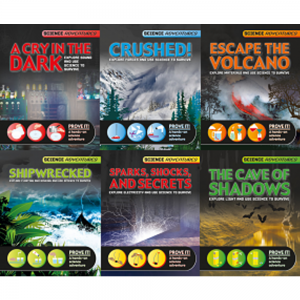I chose the second question: “What is the theoretical framework underpinning the development of the Jasper series? What kind of teaching and learning activities do the materials support and what is the role of technology? In your view, what are the potential cognitive and social affordances of the technology; in other words, how can video technology enhance learning? What are these affordances for students with learning challenges or learning issues in math? Take a look now at Math Pursuits at the University of Cincinnati and their “Classroom Connections” Video Clips. In what ways do the videos in Classroom Connections and the support materials on the site exemplify these affordances?”
The theoretical framework underpinning the development of the Jasper series is constructivist and founded on the “anchored instruction” approach to instructional design. The CTGV appears to be promoting a problem-based learning (PBL) model of student-centered mathematics discovery, however they also make affordances for two other models of instruction that embrace teacher-centered controls to varying degrees (CTVG, 1992a). Their guiding paradigm “emphasize[s] the need to rethink the goals of education and the assumptions about learning that underlie many curricula and teaching practices” (CTVG, 1992a, p.66). The goal of teaching is not seen as the improvement of test scores, on the contrary they claim “[t]ests serve to define the goals of one’s instruction” (CTVG, 1992a, p.66). The math assessments were traditional pencil-and-paper. To this end, Jasper can be considered “technology-based” only in the delivery of the complex and engaging narrative-based problems and allows teachers a great deal of leeway in determining the depth and approaches students will take when exploring these mathematical issues. It is interesting that CTGV (1992b) noted that “our Jasper teachers and students hated our pencil-and-paper assessment instruments” (p.309) and after identifying a need for formative assessment as an indicator of increased time with the problems CTGV selected teleconferencing. This suggests that the video-based narrative, complex, authentic problems, and highly interactive group-based solutions organically suggested a richer style of assessment than was originally provided. The technological advances of today would have served CTGV well to that end.
Jasper is grounded in the pedagogical philosophy of “generative learning” as opposed to “inert knowledge” (CTGV, 1992a, p.67) and don’t focus on computational skills or pre-teaching the foundational concepts as much as attempting to help students “learn to become independent thinkers and learners rather than simply become able to perform basic computations and retrieve simple knowledge facts [and]…identify and define issues and problems on their own rather than simply respond to problems that others have posed” (CTGV, 1992a, p.66). They borrow from the concept of “apprenticeship learning” by “situating instruction in meaningful problem-solving contexts…and enable them to understand the kinds of problems and opportunities that experts in various areas encounter and the knowledge that these experts use as tools” (CTGV, 1992a, p.67). They assert that by allowing students to self-generate information they will retain more, however they note that this fact causes “considerable interference if the information that is generated is incorrect” (CTGV, 1992a, p.68).
They specifically reference Gibson’s (1977) concept of “affordances” and point out that the video-based narrative nature of the adventure affords the posing of complex, authentic, and open-ended mathematical problems and the much deeper cognitive demands that solving such problems requires (CTGV, 1992a). They’ve also embedded enrichment options for students that include “What if” thinking and connections from Math across the curriculum and into the outside world. This allows teachers to provide additional opportunities for students with gifted IEP designations as well as affording inquiry-based learning that isn’t strictly scripted to the plot sequence of the original mathematics adventure. The problems are complex enough that they’ve been designed to facilitate group solutions and discussions, which is especially useful for children with learning difficulties. Socially, the narrative video allows students to engage at a much richer level both with the content and with each other as they consider and discuss any number of aspects of the story and the problems-posed.
This style of narrative-based instruction reminds me of the book series Science Adventures (2015) by Richard and Louise Spilsbury which embeds hands-on experiments within a real-world context woven through by an engaging narrative.
These books don’t allow generative learning as an affordance, however, because their problems are not open-ended enough, though it could be argued the use of narrative in book format would afford even greater cross-curricular opportunities, such as students making their own videos of the narrative or creating something similar to present other science topics to an audience of their peers. Similarly, the videos in Classroom Connections (2018) make use of the engaging video vignette to pose a problem that has cross-curricular and real-world connections. The problems encourage learners to discuss the problem and the handouts provided as pdfs on each video page provide scaffolding for the group-work and task-thinking processes. These videos do not meet the level of complexity that the Jasper series affords, however, and the vignette-length eliminates the power of narrative to engage and motivate students. There is no sense of adventure or continuity provided because these are not stories, this makes the problems seem more like a video version of a textbook question than an authentic mathematical need.
.
References
Cognition and Technology Group at Vanderbilt. (1992a). The Jasper Experiment: An Exploration of Issues in Learning and Instructional Design. Educational Technology Research and Development, 40(1), 65-80. Retrieved from http://www.jstor.org.ezproxy.library.ubc.ca/stable/30219998
Cognition and Technology Group at Vanderbilt (1992b). The Jasper series as an example of anchored instruction: Theory, program, description, and assessment data. Educational Psychologist, 27(3), 291-315. Retrieved from http://web.a.ebscohost.com.ezproxy.library.ubc.ca/ehost/pdfviewer/pdfviewer?vid=1&sid=ec15d6d4-9b0b-4b0e-9e24-ee5b2c6a30cd%40sessionmgr4010
